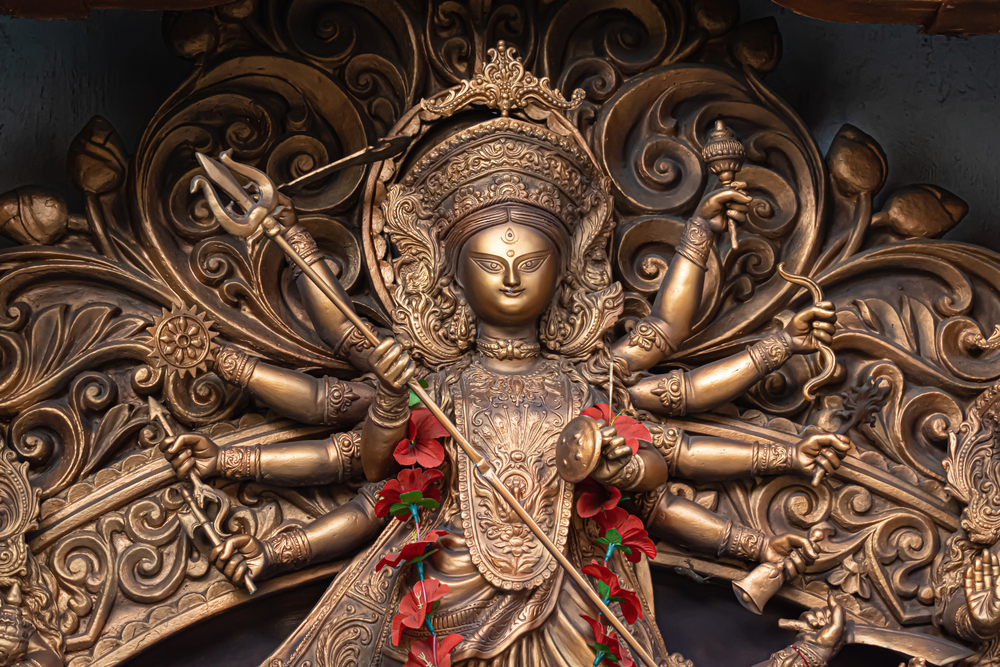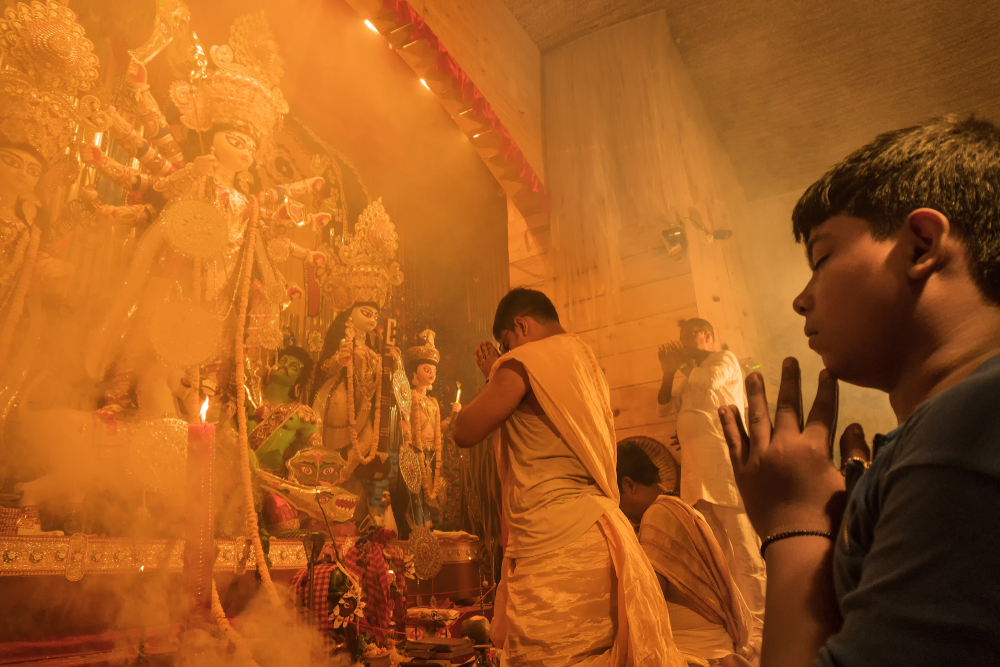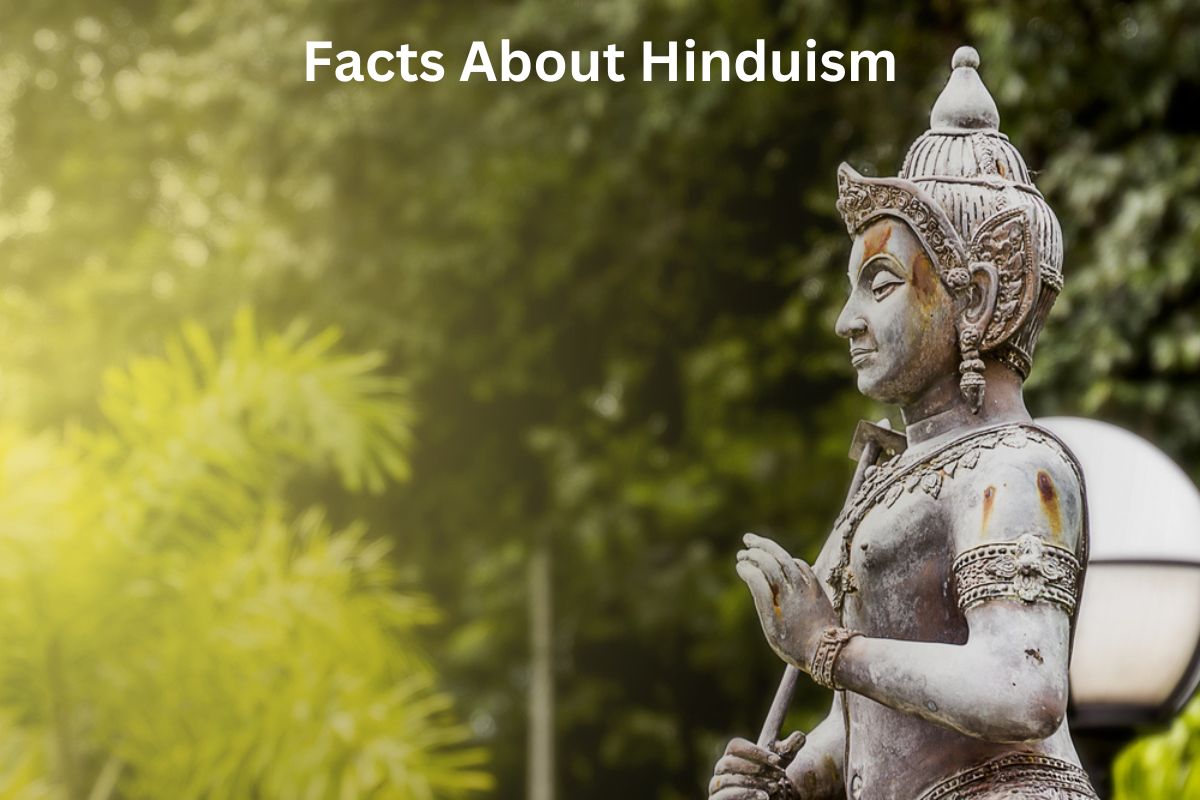Hinduism, one of the oldest religions in the world, is a complex and diverse religious and philosophical system that originated in the Indian subcontinent.
With roots dating back over 4,000 years, Hinduism encompasses a wide range of beliefs, practices, rituals, and traditions.
Unlike many other religions, Hinduism does not have a single founder or a central religious authority.
Instead, it has evolved and developed through the contributions of numerous sages, saints, philosophers, and spiritual leaders over the centuries.
As a diverse and complex religion, Hinduism continues to evolve and adapt to the changing times while maintaining its core principles and beliefs. It serves as a source of spiritual guidance, cultural identity, and philosophical exploration for millions of people around the world.
Hinduism Facts
1. Hinduism is one of the oldest religions in the world
Hinduism has a rich historical lineage that stretches back over 4,000 years. It evolved from the religious and cultural practices of the people who lived in the Indus Valley civilization, which flourished around 2500 BCE.
Also Read: Jehovah’s Witness Facts
The religious traditions and beliefs of this civilization, as well as the influence of Aryan tribes who migrated into the region, contributed to the formation of Hinduism.
2. It is the third largest religion in the world
While Hinduism is predominantly practiced in India and Nepal, it has followers and communities worldwide.
Significant populations of Hindus can be found in countries such as Bangladesh, Sri Lanka, Pakistan, Indonesia, Malaysia, Fiji, Mauritius, Guyana, Suriname, Trinidad and Tobago, and various Western nations where Indian diaspora communities have settled.

3. Hinduism is a complex and diverse religion with no single founder or central religious authority
Hinduism differs from some other major religions in that it does not have a single founder or a central religious authority.
Instead, it developed over centuries through the contributions of numerous sages, saints, philosophers, and spiritual leaders.
This decentralized nature has allowed for a diverse range of beliefs, practices, and traditions to flourish within Hinduism.
4. The Vedas, a collection of ancient scriptures, form the foundation of Hindu religious and philosophical teachings
The Vedas are a collection of ancient scriptures that hold great importance in Hinduism. These texts are considered the oldest sacred literature in the Hindu tradition and are written in Sanskrit. The Rigveda, Yajurveda, Samaveda, and Atharvaveda are the four main Vedic texts.
They contain hymns, prayers, rituals, and philosophical teachings. The Vedas serve as a foundation for Hindu religious and spiritual thought and are studied and interpreted by scholars and priests.
5. Hinduism is a polytheistic religion, with a belief in many gods and goddesses
Hinduism is often characterized as a polytheistic religion due to its belief in multiple gods and goddesses. The Hindu pantheon consists of a vast array of deities, each associated with different aspects of the cosmos, nature, and human life.
Some of the most widely worshiped deities include:
- Brahma – the creator
- Vishnu – the preserver
- Shiva – the destroyer and transformer
- Lakshmi – the goddess of wealth and prosperity
- Saraswati – the goddess of knowledge and learning
- Durga – the goddess of power and protection
However, it is important to note that Hindu philosophy also recognizes the ultimate reality as Brahman, a formless, all-pervading cosmic consciousness that transcends any specific deity.
This aspect of Hinduism aligns with the concept of monism or non-dualism, known as Advaita Vedanta.

6. At the core of Hinduism is the concept of dharma
Dharma is a central concept in Hinduism, referring to the moral and ethical duties and responsibilities that individuals must fulfill in order to live a righteous and virtuous life.
Dharma encompasses various aspects, including personal duties, social obligations, and spiritual practices. It is believed that living in accordance with dharma leads to personal well-being and contributes to the harmony of society and the cosmos.
7. The belief in karma is another fundamental aspect of Hinduism
Karma is a fundamental belief in Hinduism. It is the law of cause and effect, suggesting that every action has consequences. According to this concept, individuals accumulate karma based on their actions, intentions, and thoughts.
Positive actions lead to positive karma, while negative actions lead to negative karma. The accumulated karma shapes one’s present circumstances and influences future rebirths.
The ultimate goal is to attain liberation from the cycle of rebirth by purifying one’s karma and achieving spiritual liberation.
8. Hinduism places a strong emphasis on reincarnation or the cycle of birth and death
Hinduism teaches that the soul is eternal and undergoes a cycle of birth and death known as samsara. Reincarnation is the belief that after death, the soul is reborn into a new body. The specific circumstances of the next birth are determined by the accumulated karma.
Reincarnation continues until the soul achieves moksha, liberation from the cycle of rebirth. The process of reincarnation provides opportunities for spiritual growth, learning, and the resolution of karmic debts.
9. Yoga and meditation are important practices in Hinduism
Yoga and meditation are integral practices within Hinduism. Yoga encompasses a variety of physical, mental, and spiritual disciplines aimed at achieving self-realization and union with the divine.
It involves physical postures (asanas), breathing exercises (pranayama), ethical guidelines (yamas and niyamas), concentration practices (dharana), meditation (dhyana), and ultimately, a state of complete absorption (samadhi).
Meditation plays a crucial role in quieting the mind, cultivating self-awareness, and attaining spiritual insights.
10. Hindu temples are places of worship and spiritual reflection
Hindu temples are sacred places of worship and spiritual connection. They serve as abodes for the deities and as spaces for devotees to engage in religious rituals, prayers, and offerings.
Hindu temples vary in size and architectural style, ranging from small shrines to large complexes. They often feature ornate carvings, intricate artwork, and colorful decorations.
Temples are not only places of religious practice but also centers for cultural and social gatherings, where festivals, ceremonies, and community events take place. They are considered gateways to the divine and provide a sense of spiritual solace and upliftment for devotees.
11. The cow is considered a sacred animal in Hinduism and is revered as a symbol of life and abundance
Cows hold a special place in Hinduism and are considered sacred animals. They are revered as a symbol of life, fertility, and abundance. The cow is often associated with the goddess Kamadhenu, who is believed to fulfill all desires.
In Hindu mythology, cows are associated with various deities, such as Krishna, who is depicted as a cowherd. Many Hindus refrain from consuming beef and consider cow protection as a moral duty. Cow worship and the practice of gifting cows to priests or the needy are considered virtuous acts.
12. Festivals play a significant role in Hinduism
Hinduism is marked by a multitude of festivals celebrated throughout the year. Festivals play a significant role in religious and cultural life, bringing communities together and fostering a sense of unity and devotion.
Diwali, also known as the Festival of Lights, is one of the most widely celebrated Hindu festivals. It symbolizes the victory of light over darkness and good over evil.
Other major festivals include:
- Holi (the festival of colors)
- Navaratri (celebrating the goddess Durga)
- Raksha Bandhan (celebrating the bond between siblings)
- Janmashtami (commemorating the birth of Lord Krishna).
Each festival has its unique customs, rituals, and significance.
13. The caste system has had a historical influence on Hindu society
The caste system has been an influential social structure in Hindu society, although its significance and impact have evolved over time. Traditionally, the caste system categorized people into distinct social groups based on occupation, birth, and hereditary roles.
The system was hierarchical, with Brahmins (priests and scholars) at the top, followed by Kshatriyas (warriors and rulers), Vaishyas (merchants and farmers), and Shudras (laborers and servants).
Below the caste system were the Dalits (formerly known as untouchables) who were considered outside of the caste hierarchy. The caste system has faced criticism for its potential for social discrimination and inequality, and efforts have been made to promote social equality and inclusivity.
14. Hinduism has a rich mythology with numerous gods, goddesses, and epic stories
Hinduism is rich in mythology, folklore, and epic stories that shape the religious and cultural imagination. The two most famous Hindu epics are the Mahabharata and the Ramayana.
The Mahabharata narrates the story of the Kurukshetra War between two sets of cousins, the Pandavas and the Kauravas, and explores complex themes of duty, righteousness, and moral dilemmas.
The Ramayana depicts the adventures of Prince Rama, his wife Sita, and his loyal devotee Hanuman.
It teaches lessons about honor, loyalty, and the triumph of good over evil. These epics have not only influenced Hindu religious beliefs but also shaped art, literature, theater, and cultural expressions across various societies in Asia.
15. Hinduism has had a profound influence on art, literature, music, dance, and architecture in India and beyond
Hinduism has profoundly influenced various forms of cultural expressions, including art, literature, music, dance, and architecture.
Hindu art and sculpture are characterized by intricate carvings, statues of deities, and vibrant symbolism. Literature in the form of religious scriptures, philosophical treatises, and epic poems has flourished within the Hindu tradition.
Indian classical music, with its melodic and rhythmic intricacies, draws inspiration from Hindu devotional music.
Classical dance forms like Bharatanatyam, Kathak, Odissi, and Kathakali often depict Hindu mythological stories and spiritual themes.
Hindu architecture is exemplified by magnificent temple complexes, such as the temples of Khajuraho, Konark, and Meenakshi Amman.
These cultural expressions not only preserve the religious heritage but also showcase the aesthetic and spiritual dimensions of Hinduism.
